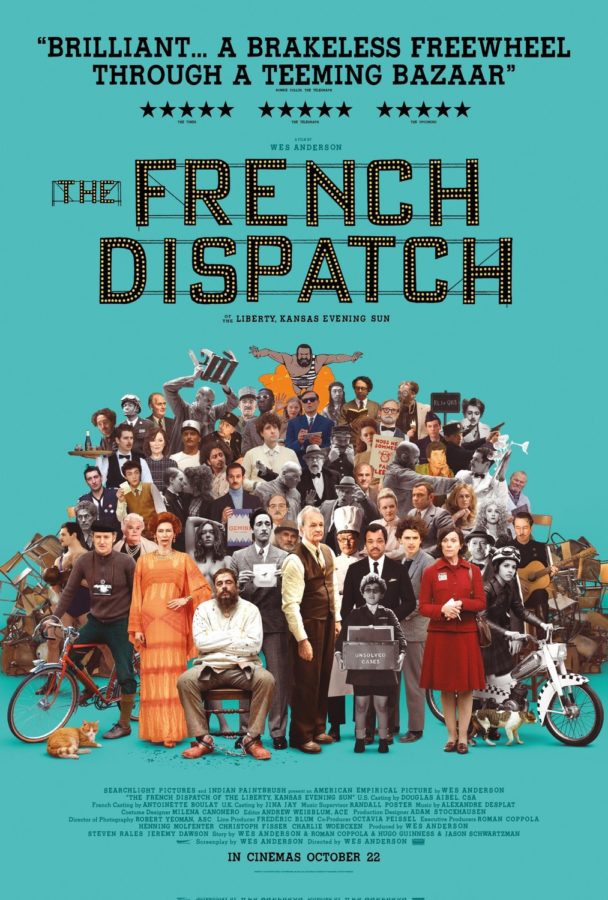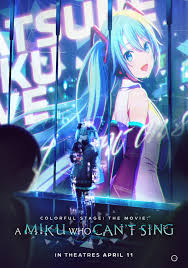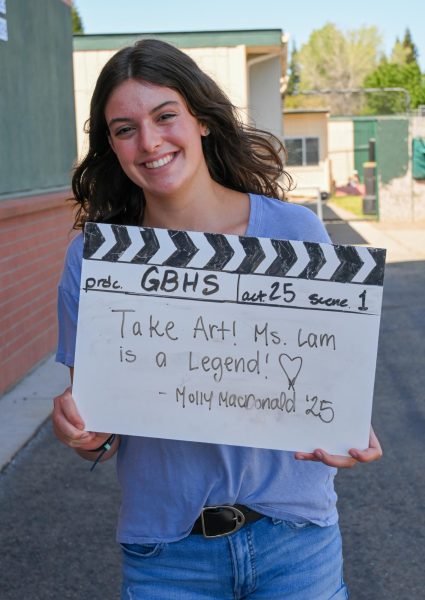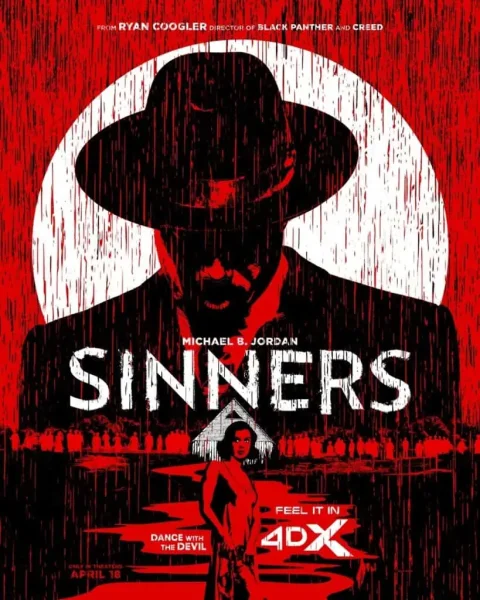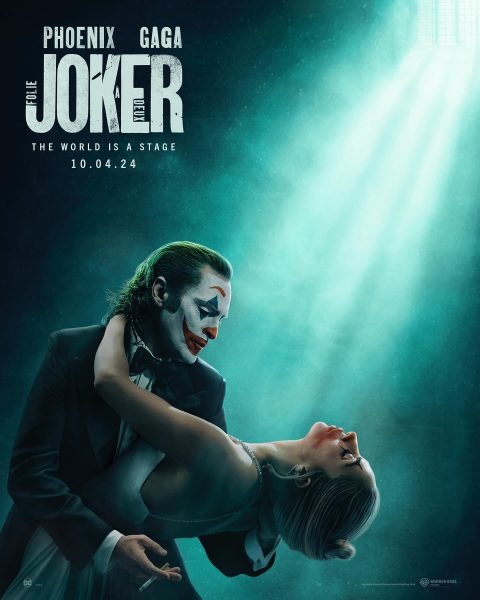Movie Review: The French Dispatch
Anthology and romantic comedy, “The French Dispatch,” was publicly released on Oct. 29, 2021.
“The French Dispatch,” American director’s Wes Anderson’s tenth film, displays the auteur at his most inventive.
The film is an anthology, a first for Anderson, revolving around three main stories.
The narratives are part of the final issue of a fictional newspaper, the French Dispatch, located in a fictional French city, Ennui-sur-Blase.
The anthology style of storytelling with its diverse array of narrators, in this case the writers of the French Dispatch, is the movie’s primary highlight. Each of the three stories distinguish themselves with their own writer yet all are closely involved with the films’ events.
In this sense, the movie is more of a celebration of the writer than the people they meet.
The first story, “ The Concrete Masterpiece” by J.K.L. Berensen, revolves around Moses Rosenthaler, a mentally insane painter, who has been put in jail for murder. The eccentric artist falls in love with one of his guards, who agrees to be his model. Though a simple premise, director Anderson skillfully explores themes of creation, greed in art, appreciation and love.
The second story, “Revisions to a Manifesto,” (Lucinda Krementz) delights viewers with the contrast it defines between the youthful spirit of revolutionary Zeffirelli and the conservatism and curtness of reporter Lucinda Krementz.
The final story, “The Private Dining Room of the Police Commissioner” (Roebuck Wright) details the events of a single night where the police chief’s son is kidnapped and held for ransom. As such, the whole story is lathered in a dark atmosphere, with brief reprieves of action and comedy.
Anderson’s style permeates through his witty, uber-dry screenplay and lavish narration, strengthened from his perspective as a writer.
The narration demands the attention of the viewer for full understanding. It is both impressively intricate and astonishingly moving.
Anderson also pushes his style to its limits. He uses every trick and tool in his kit and experiments with mediums and editing techniques to scratch the audience’s brain.
Color is used to great effect in this movie. The movie’s cast invokes life in the written material and with colorful precision, painting most of the stories in film noir but still with showcases brief, startling switches to color that reveal a fuller picture. While black and white is often a detractor for modern audiences, but Anderson manages to keep the screen visually stimulating enough to maintain interest. And when color is restored, the movie stuns you with its beautiful simplicity.
If I could predict any criticism towards “The French Dispatch” it would be its pacing. This is not an action packed movie or one that seeks to blow the audience’s mind. Instead, it is a slower paced, more intimate trek through three deeply personal stories. The dialogue is delivered intentionally monotone and with such a high concentration of content, that I could see many viewers feeling lost or even bored. If you are not a fan of Anderson’s particular style this movie will be a long ride because “The French Dispatch” seems unwilling to sacrifice its style for substance. This leads to a lack of character development in favor of setting an atmosphere.
Still, “The French Dispatch” is a technical and stylistic gem and a glorious, if not self indulgent, love letter to storytelling and creation. The writer in me cannot help but feel the love Anderson has for his craft and I would highly recommend this movie to anyone looking for a change of pace in their film diet.
The movie is truly the culmination of a ten year film career.
Overall Rating: 8/10

Justin is a senior and co-editor-in-chief. This is his fourth year on the Gazette staff.



